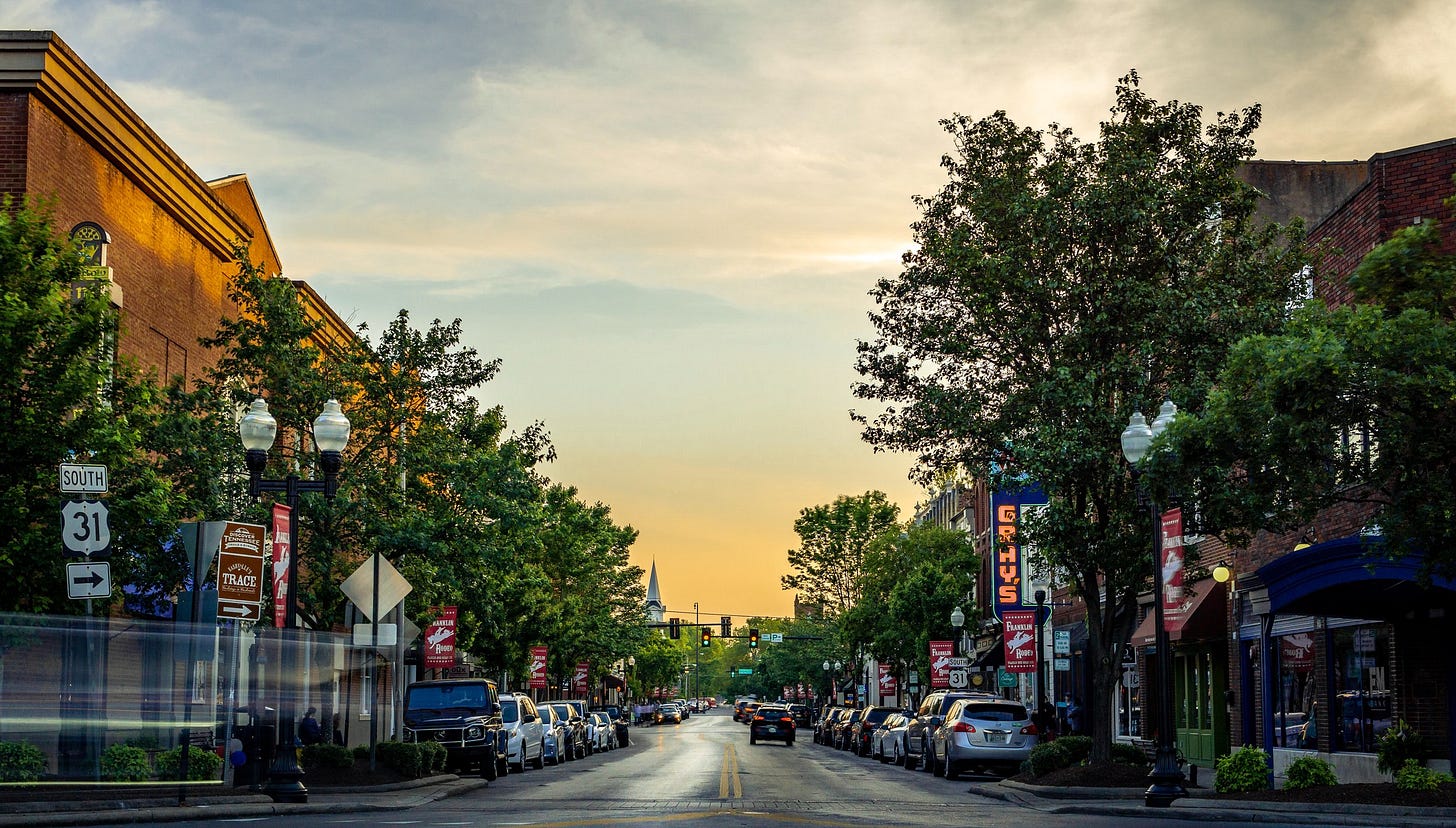How to Define "Southern Urbanism"?
An essay on old-fashioned citybuilding where two Alabama architects explore what makes our cities tick.
Written By Louis Nequette & Jared Calhoun
This essay was originally printed in Issue 1 of Southern Urbanism Quarterly as the first piece in an ongoing series where practitioners will wax on what it means to be Southern and urban.
Old-Fashioned Citybuilding
If Southern Urbanism were a cocktail, the key ingredients would be:
1 part small turn-of-the-century Southern town
1 part eclectic mercantile-meets-vernacular character
1 part humid sunshine
A dash of sweet Southern hospitality
This cocktail would be best served on the rocks—an honest and simple presentation most befitting of its contents. And much like small-town urbanity, the most important part would be the setting. So, plan on enjoying one of these cocktails on a breeze-washed porch on a temperate summer night with lifelong friends and friendly strangers alike. (In a Southern city, that stranger might even be your next lifelong friend.) Pace matters, too, so be sure to find yourself sitting in your favorite rocking chair.
You see, the secret to this cocktail’s success has less to do with ingredients and more to do with warmth. It’s about the love for life of those who share in it. Everyone has heard of Southern hospitality—that’s a real phenomenon—but there’s more to it than that. The Urbanism of small Southern towns is an embodiment of the culture. The tempo is slower, the growth is slower. It’s built on community, relationships, and a deep affection for the people and the places they hold in common.
Southern Urbanism is the built representation of this way of life. It’s far more than just a place. Of course, location is important, but in the South, it’s rarely ever about one big municipality. Rather, it’s a necklace of tree-lined towns, villages, and neighborhoods that sometimes link together to pose as a city. And because our roots spring from small, fiercely independent rural towns, building proportions are key. Here, there’s little reason to exceed four stories, and three is usually better. A plurality of the South’s most admired commercial buildings are one story tall.
Why? We like it quaint and inviting, so it always feels like a home. We also like to use local materials so we can afford it. After all, it’s not a corporate money-building town—it belongs to yours and your neighbors. We dare not become a big city because it would be hard to know everyone in such a place. And oh boy, do we ever like to know everyone.
Once you add a big front porch to a Tudor house and tuck it under a canopy of oaks and pines, something entirely new emerges.
Our towns, new and old, reflect the simple brick mercantile buildings from the turn of the twentieth century—utilitarian in nature with a splash of delight. That’s the South. Overly ornate or highly classical styles are exclusively reserved for modest-sized civic and institutional buildings. You’ll see a sprinkling of modern or Art Deco styles inserted into the urban fabric where a structure burned or decayed. For the most part, though, the character of these towns is defined by the desire to preserve their fabric and the story they tell. Our most loved houses started as either rural farmhouses, company-town cottages, or transplanted reflections of these migratory industrial and agrarian economies. It’s the latter of these that drives the distinct local character of the South.
For example, Birmingham, Alabama, was a steel town owned by magnates from Pittsburgh and named for its big industrial sister in England. As a result, its houses have an interesting Tudor influence, but their forms are clearly “Southernized”: Porches and overhangs are mandatory to manage the heat. And once you add a big front porch to a Tudor house and tuck it under a canopy of oaks and pines, something entirely new emerges. Those of us with area ties cherish this local flavor and continue to riff on the English/Southern architectural marriage today. As a result, there are few places that feel or look like Birmingham.
And then there’s Franklin, Tennessee, which was once the mercantile hub of Williamson County’s bustling agricultural system. Franklin developed its own core of simple warehouses and shops before securing its spot in history as a Civil War battle-line town. By the end of its three-year military occupation, many of Franklin’s structures were burned down, full of bullet holes, or deserted. The town was decimated, as was its plantation economy. The city of Franklin was abandoned and forgotten for the next hundred years. Still, the community persisted, and over the following decades, its economy was rebuilt. Today, Franklin is a patchwork quilt comprised of history, Southern charm, and a modern, inclusive sensibility. Main Street is small in scale and full of new life—a blend of old and new, inviting and bustling.
Southern Urbanism tastes best when we first consider each town’s history. That includes the elements we celebrate as well as the ones we learn from. Next, we mix in unique urban and vernacular characteristics. Then, we stir in the adaptations that let us tolerate the weather that makes May through October one long, hot, and humid summer day. Finally, we pour a strong sense of culture and community over the top. What we’re left with is a special place worth savoring. Drink it slowly, and don’t forget to include your friends.
Louis Nequette and Jared Calhoun work at Nequette Architecture & Design, a community-focused firm located in Downtown Birmingham, Alabama. Follow them @nequettearchitecture to see how their work is bringing people together.

